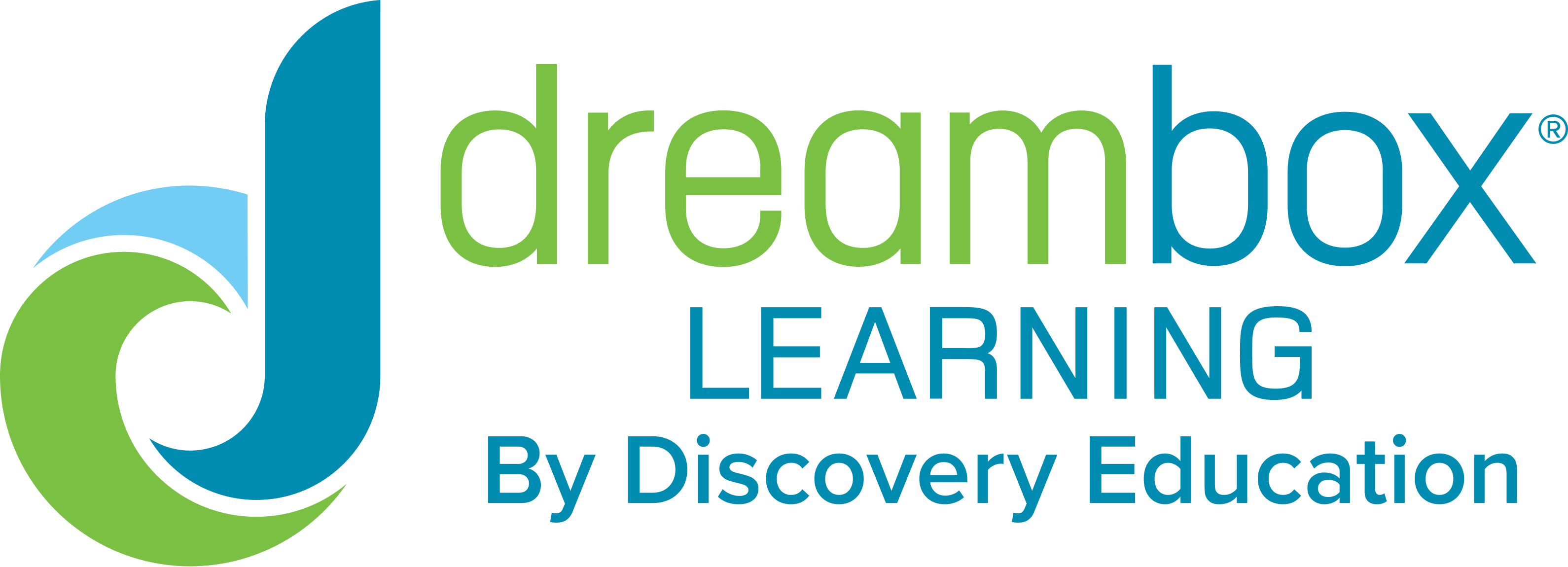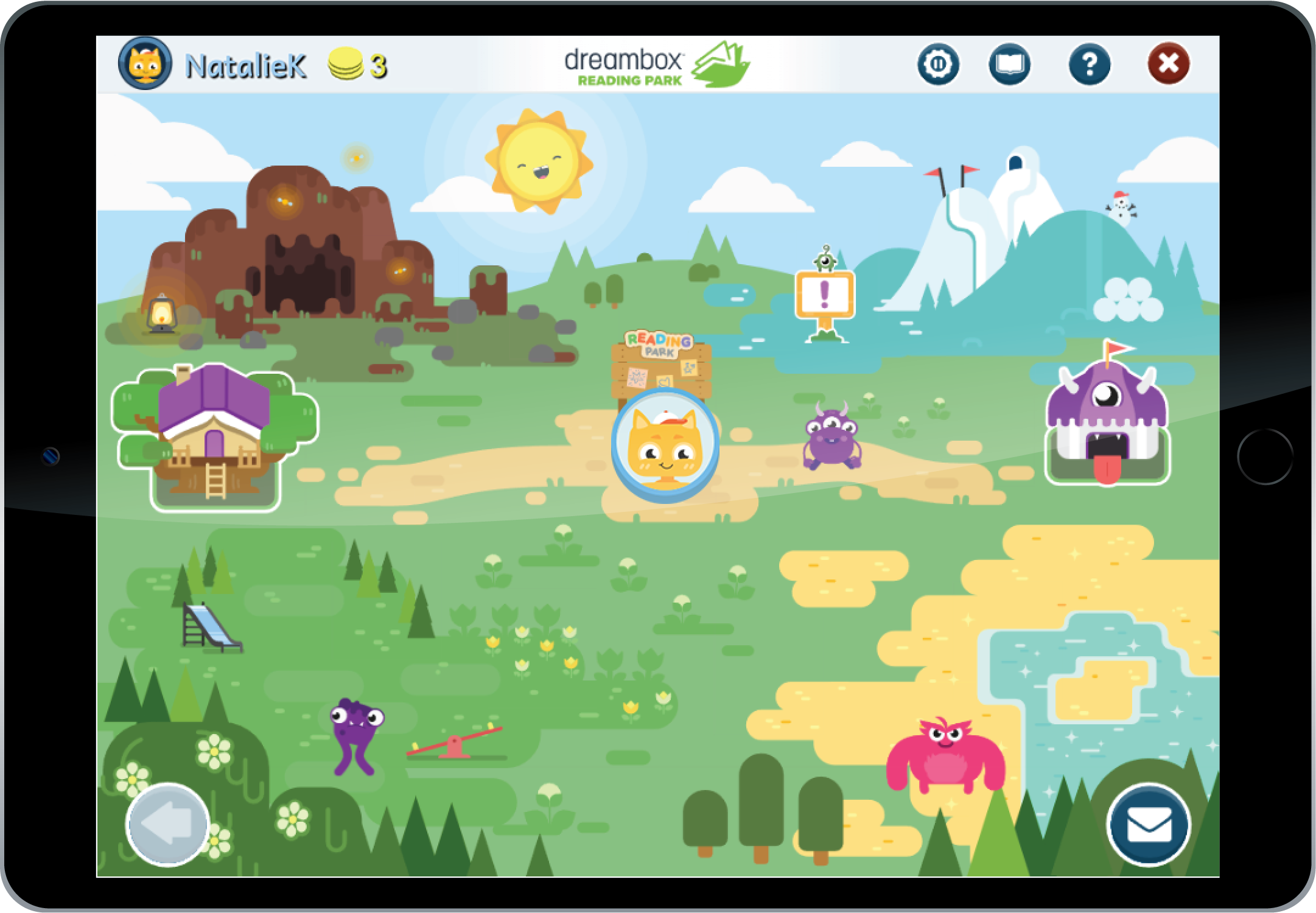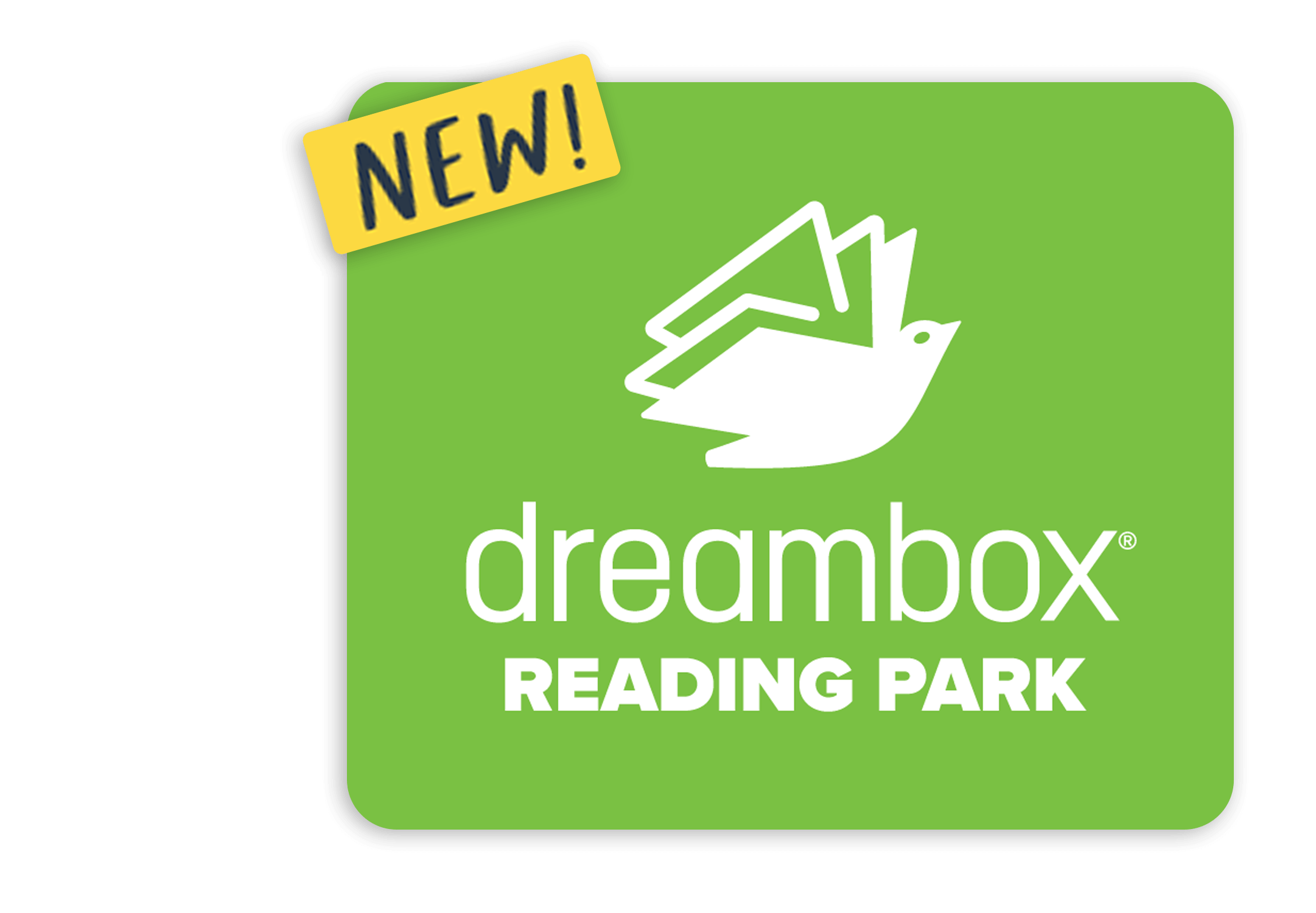Try DreamBox Reading Park Lessons
DreamBox Reading Park combines state-of-the-art adaptivity with a research-based, structured literacy pedagogy and personalized student learning paths. Over 1,500 teacher-crafted foundational reading lessons are available in an explicit, systematic scope and sequence that maximizes learning outcomes.
Explore Reading Park
Choose a Grade and Lesson
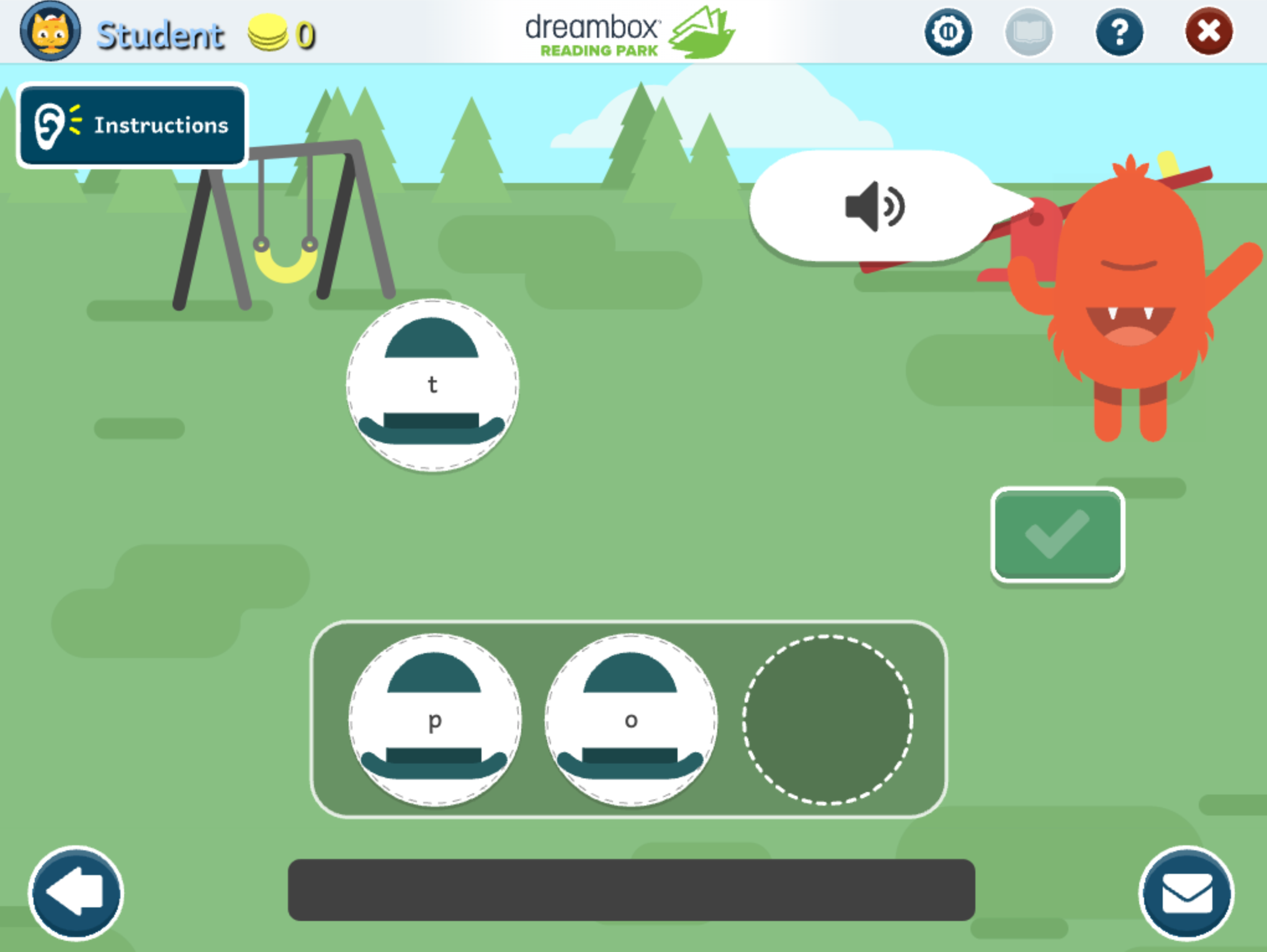
Blending
Phonemic Awareness: Word Blending: Building CVC Words
In this lesson, students are presented with blank spaces in which to build a word by placing available letters in the correct order. Students can listen to audio of the target word as well as press the letters to hear the phonemes they represent.

Initial, Medial, and Last Sounds
Phonological Awareness: Rhyming: Matching /at/, /am/, /ad/, and /an/ Words (Sound to Image)
In this lesson, students will be asked to match a word from a specific word family to an image of a word that rhymes. Students can press to hear the word represented in the image, and listen to each of the word choices to pick the correct match.
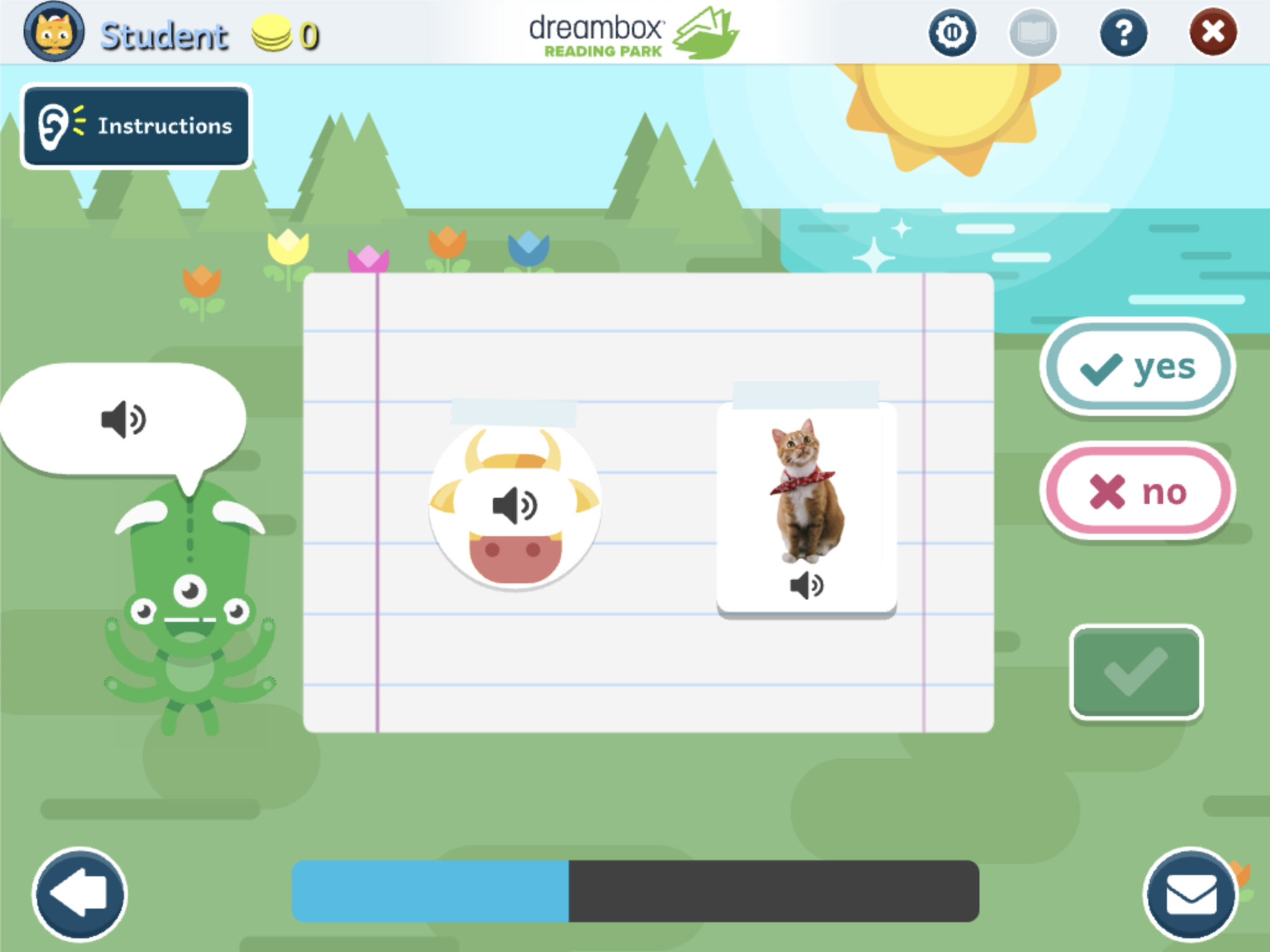
On-Set Rime
Phonological Awareness: Determining if /at/, /am/, /ad/, and /an/ Words Rhyme (Sound to Image)
Students are shown two items, one is an audio icon and the other is an image. They can press on either item to hear the word it represents. Students answer ‘yes’ or ’no’ in order to determine if the two represented words rhyme.
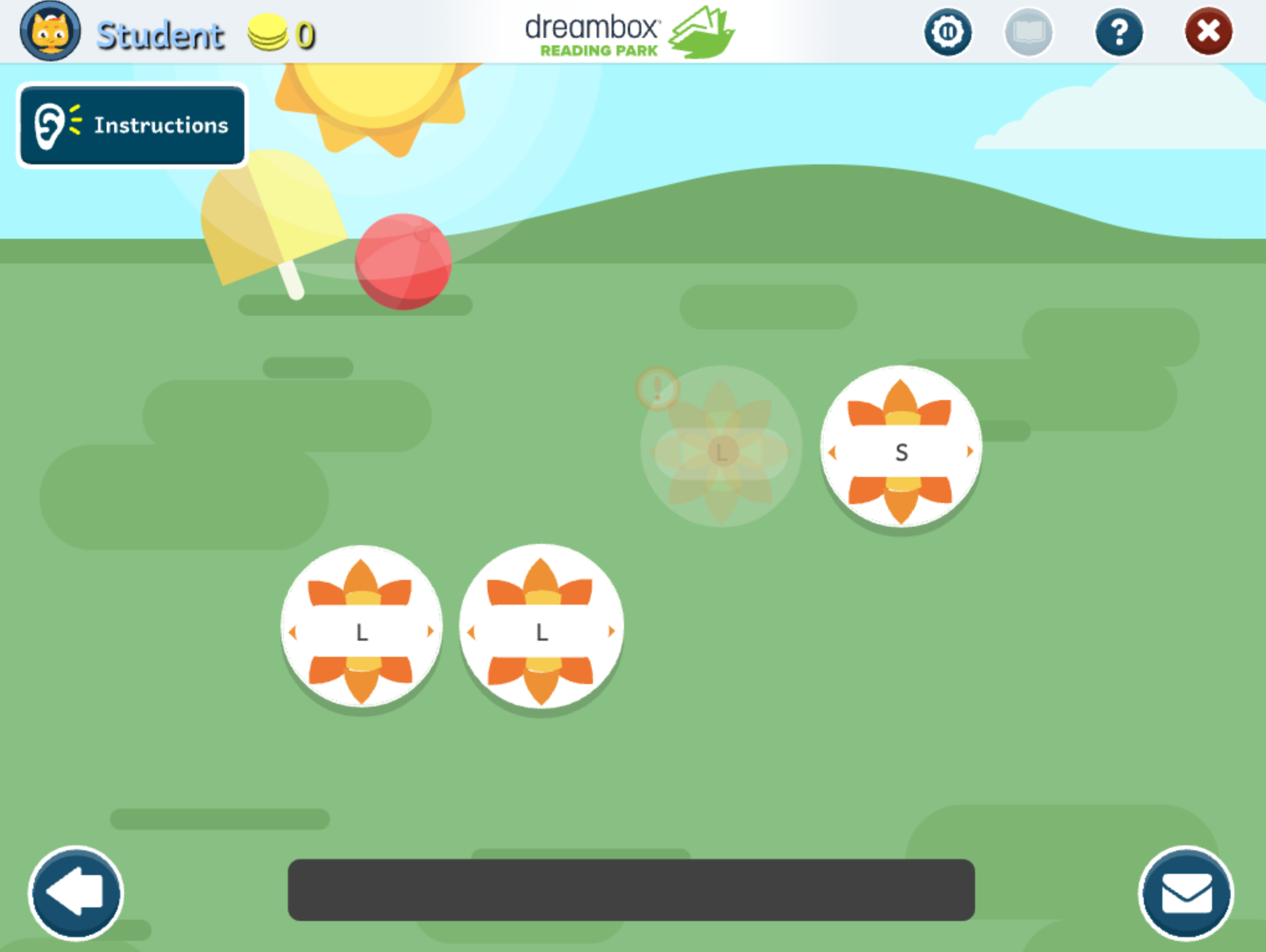
Alphabet ID
Alphabetic Principle: Letter Identification: Upper and Lowercase L
In an activity that begins to mimic the process of reading, students are presented with letters appearing in a sequence from left to right and top to bottom and asked to identify a target letter by pressing on it before it disappears.
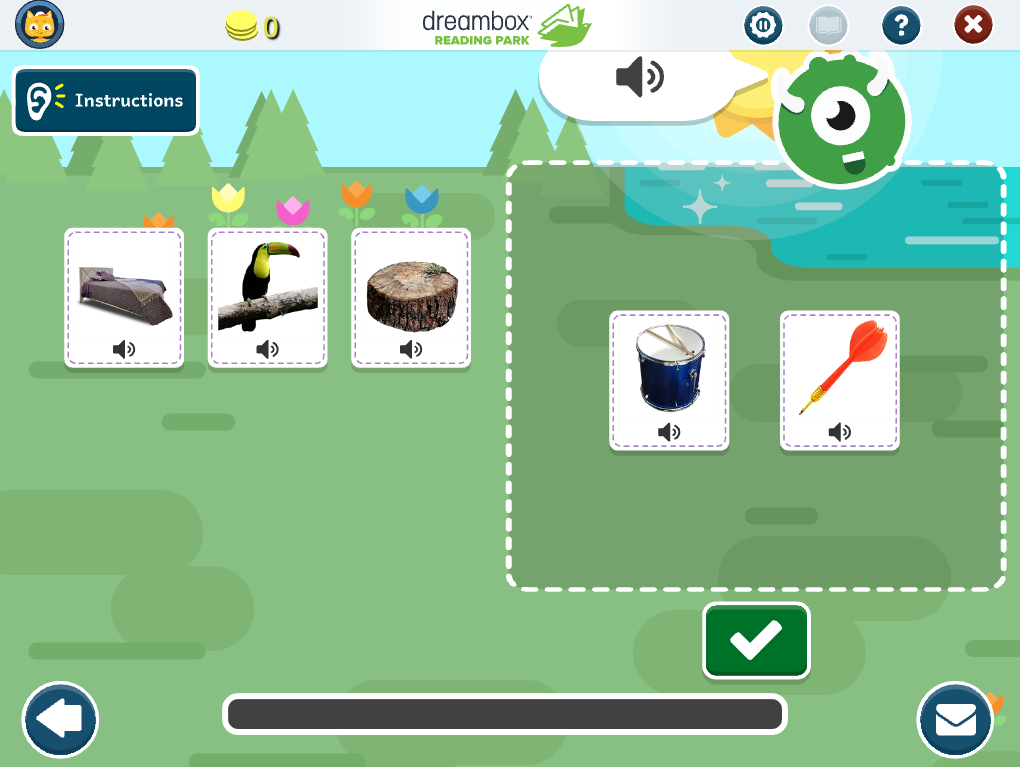
Letter Sounds
Alphabetic Principle: Letter Sounds: Collect /d/ Words (Sound to Image)
In this lesson, students are presented with a set of images and asked to collect the ones that begin with the same sound. Students can press to hear the word that each image represents.

Onset-Rime
Phonics: Onset-Rime: Sound to Text Word Families _at and _am
This lesson focuses on onset-rime, also known as word families (words that end in the same letters and sounds). Students are shown a word ending and asked to choose another word that has the same ending. Students can see the grapheme and hear audio of the target word ending, as well as audio for each of the optional word choices
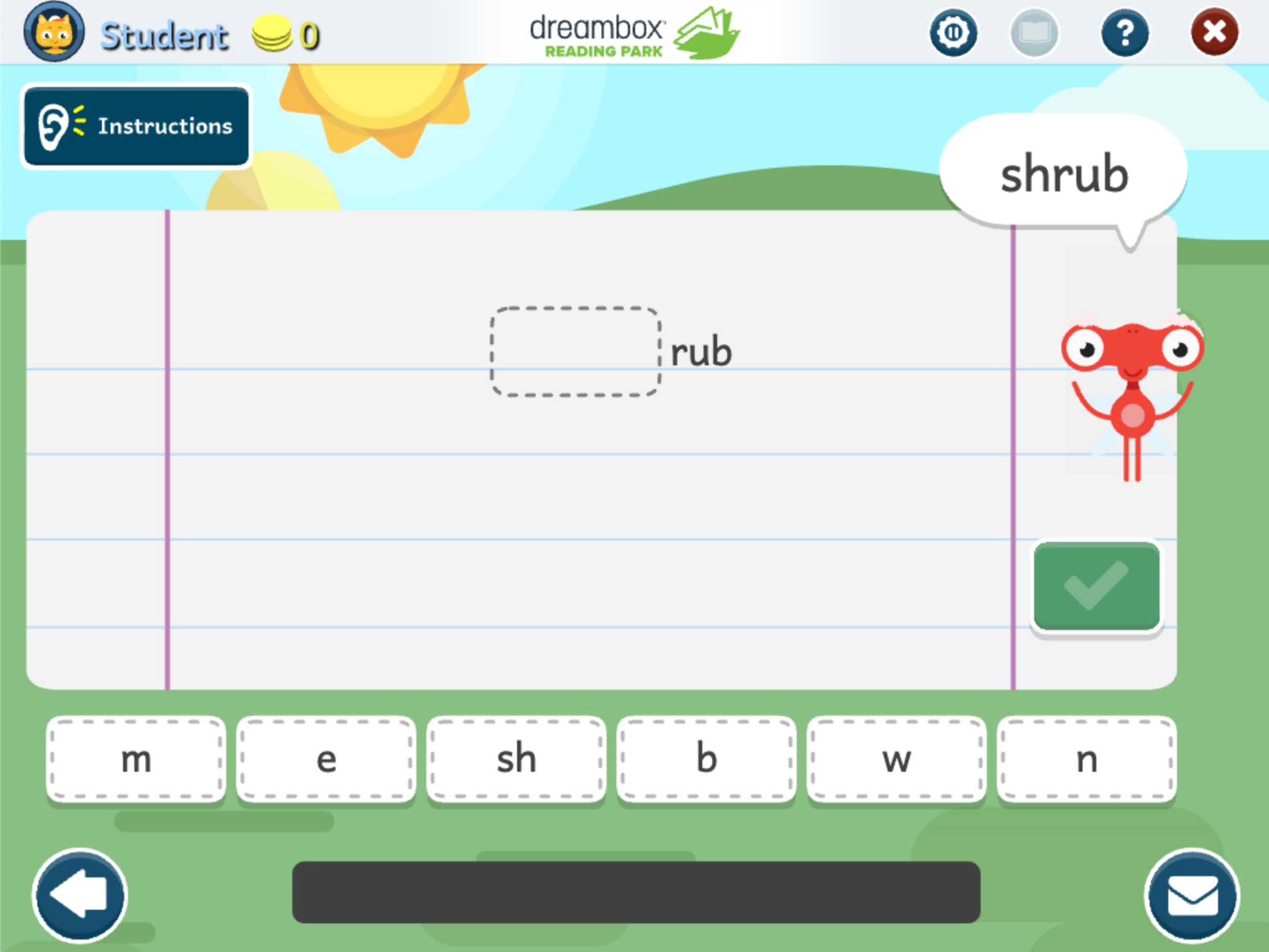
Digraphs
Phonics: Digraph: Completing sh_ Words
In this lesson, students are asked to fill in the blank portion of a word with the correct digraph. Students can listen to the target word and see or hear the grapheme choices.
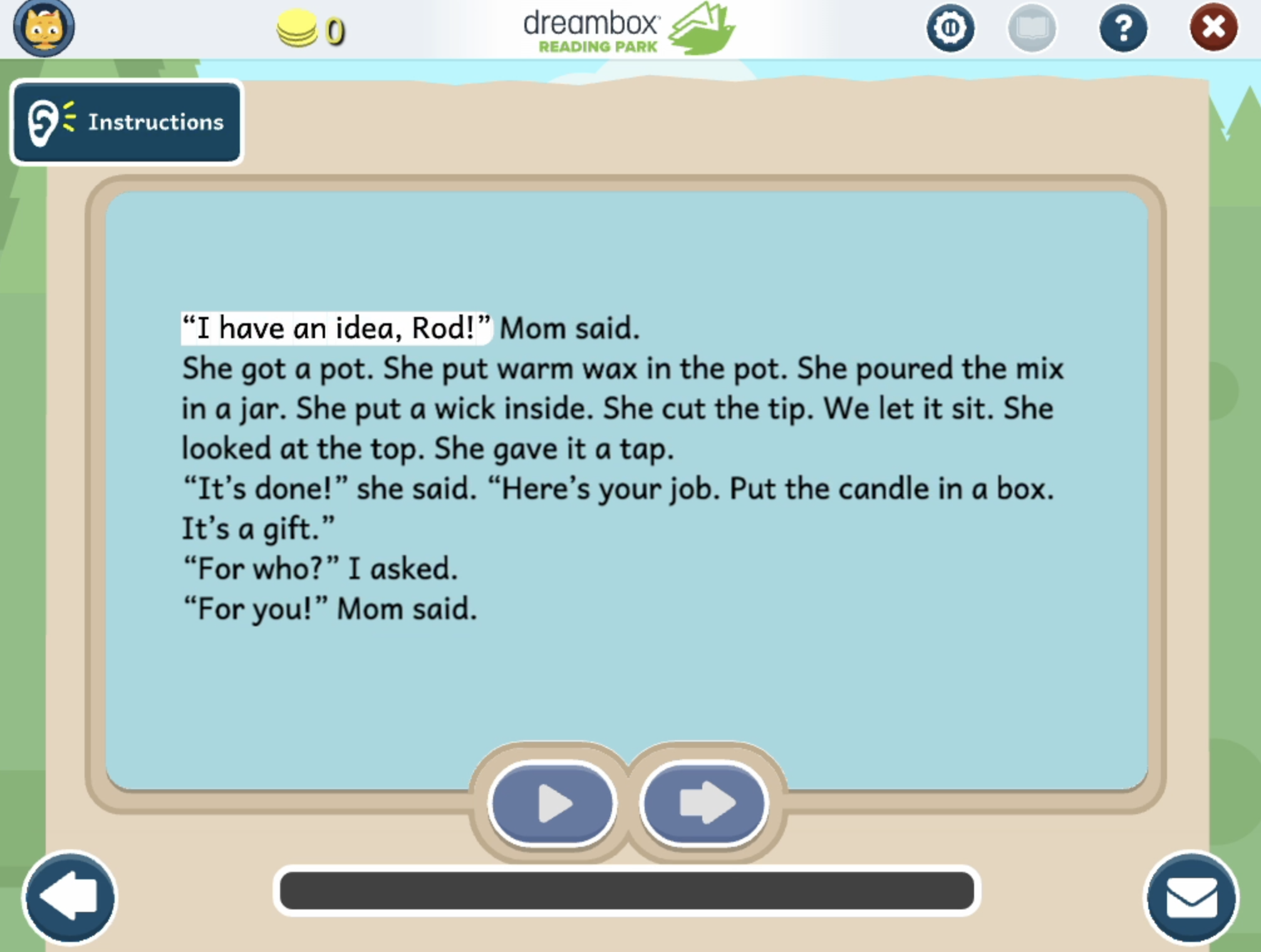
Fluency & Comprehension
Fluency and Comprehension: Reading to Support Onset-Rime Onset-Rime _ap, _ax, _ip, _ix, _ob, _od, _ot, _ox: “The Candle” (Fiction)
In this lesson, students are focusing on fluency and comprehension skills. Students are introduced to the text passage by utilizing a guided reading window that blurs out all of the text, except for what is being read aloud. When the passage is finished, students are then asked comprehension questions based on the text. The student must answer the question by either citing evidence within the text (highlighting the sentence(s) that answer the question), or by answering a multiple choice question.

Digraphs
Phonics: Digraphs: Matching _ch Words (Sound to Text)
Students are presented with an assortment of words and asked to choose the one that contains a target sound. Students can listen to the target phoneme by pressing on the audio icon or hear each word by pressing on it.
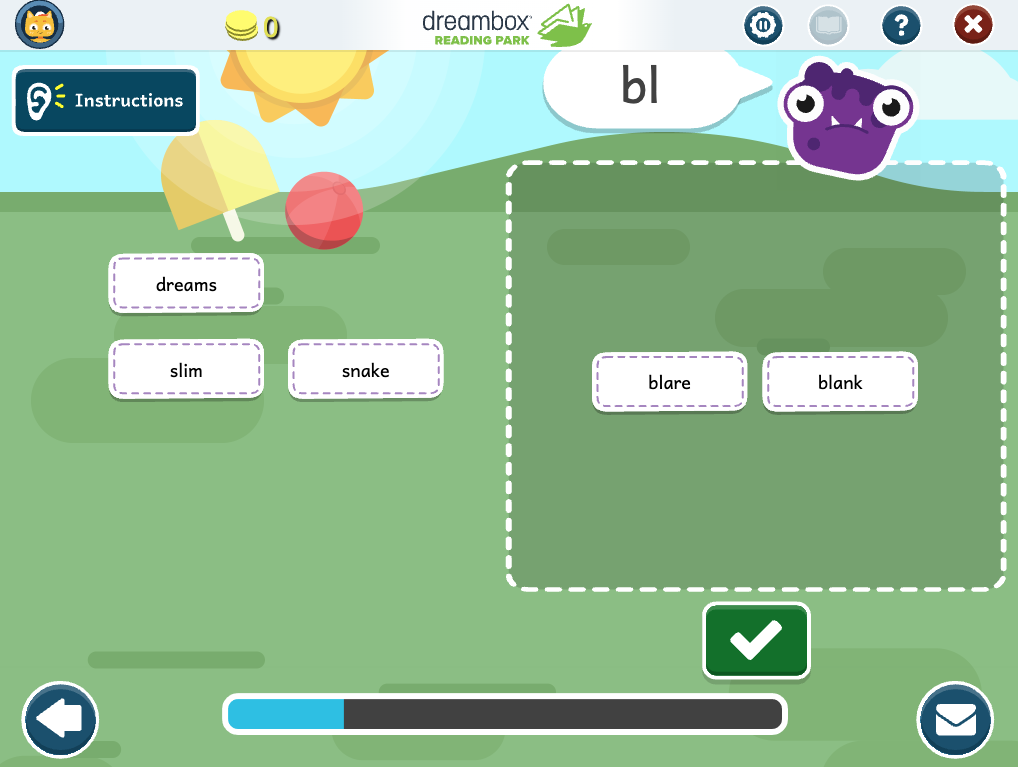
Blends
Phonics: Blends: Collecting bl_, cl_, and fl_ Words (Text to Text)
Students see an assortment of words and are asked to collect all of the words that contain a target grapheme by dragging them to the collection area on the right side of the screen. Students can press the grapheme to hear the sound it represents, and press to hear each word.
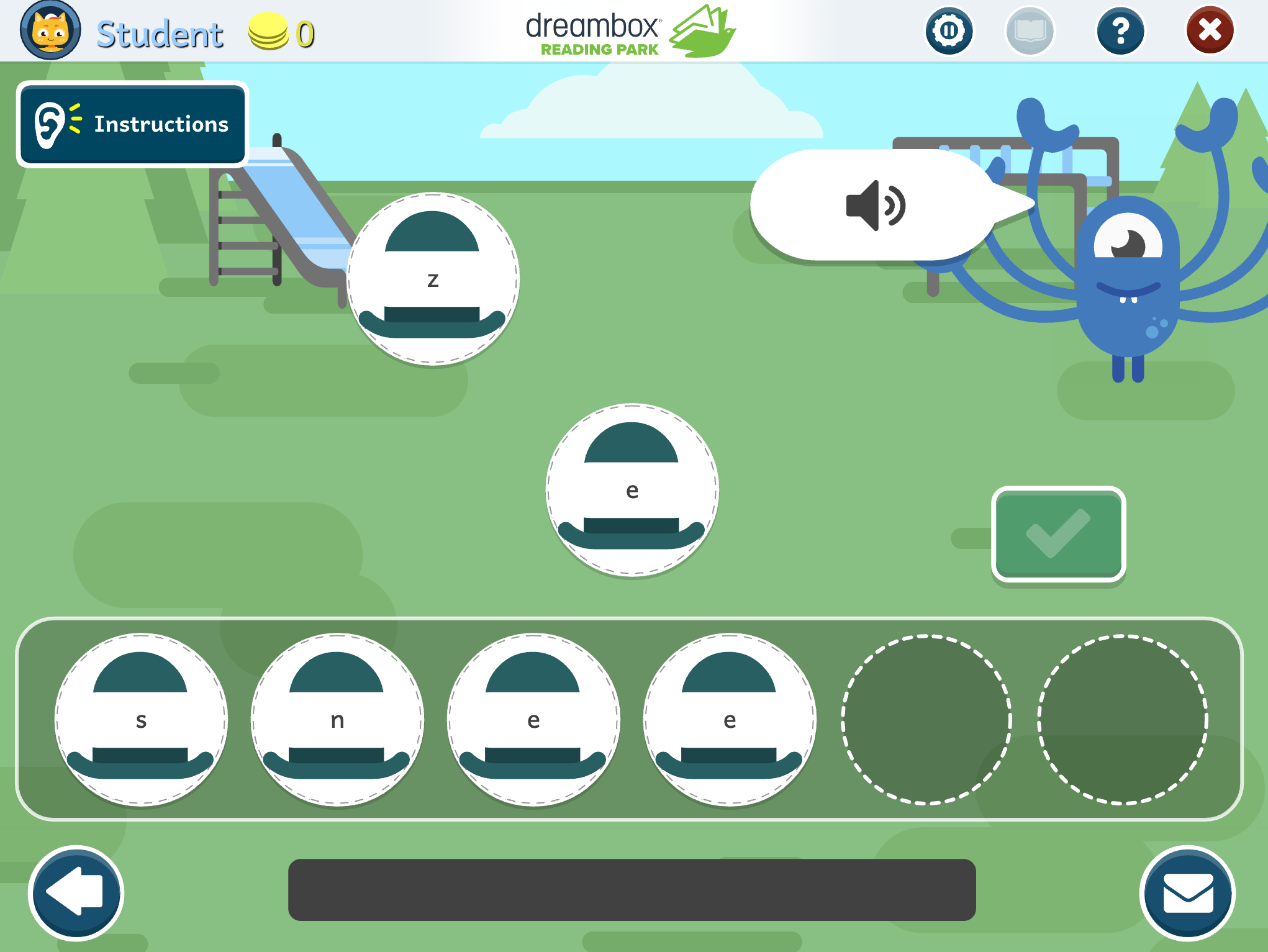
Blends
Phonics: Blends: Ordering Letters to Build sn_ Words
In this lesson, students are presented with blank spaces in which to build a word by placing available letters in the correct order. Students can listen to audio of the target word as well as press the letters to hear the phonemes they represent.
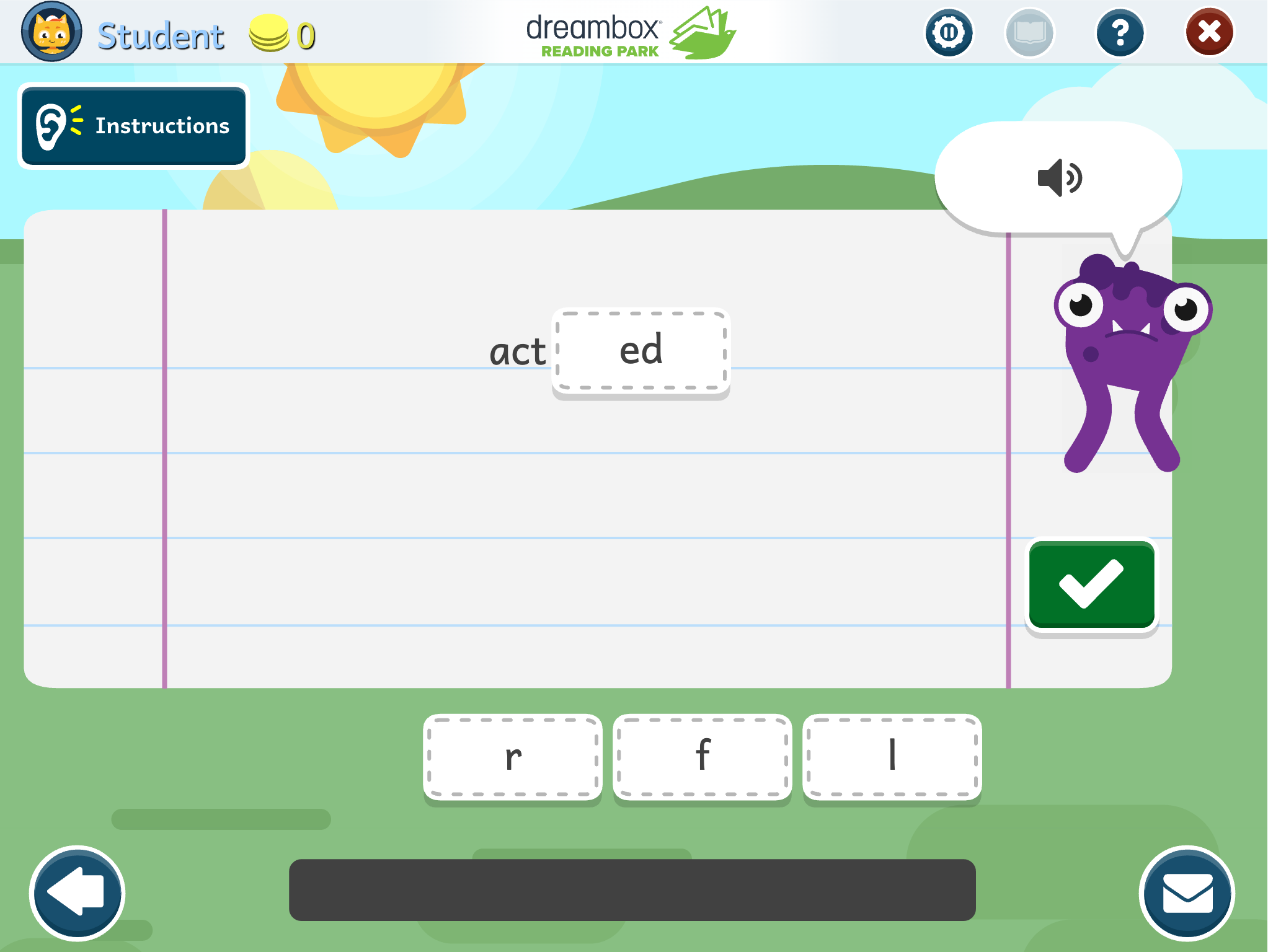
Endings
Phonics: Endings: Completing Words with _ed Ending
In this lesson, students are asked to fill in the blank at the end of a word with the correct inflectional ending. Students can listen to the target word and see and hear the grapheme choices.
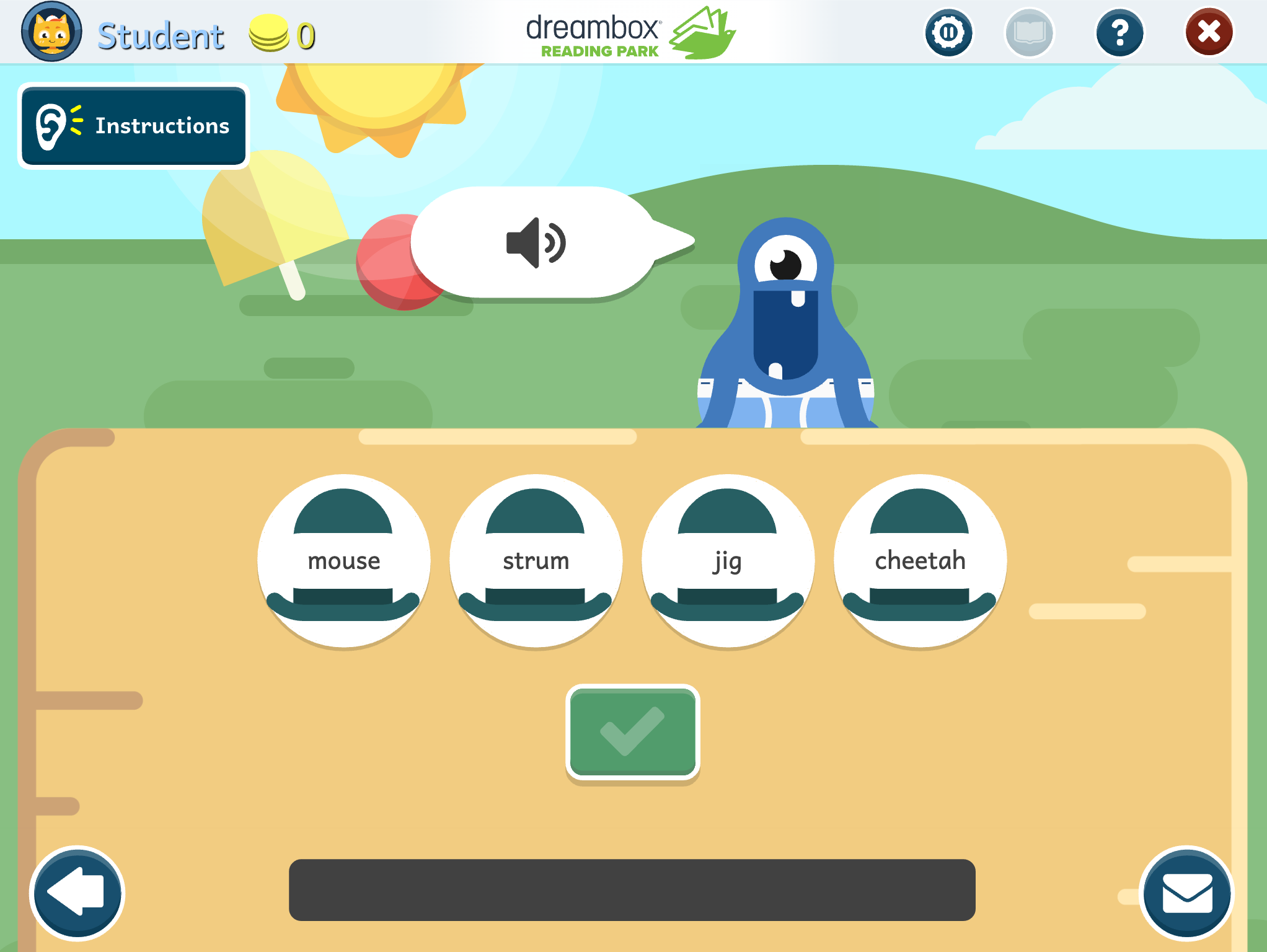
Diphthongs
Phonics: Diphthongs: Choosing Words Containing ou (cloud) (Sound to Text)
Students are asked to choose the word containing a specific diphthong from an assortment of words. Students can listen to the diphthong by pressing the audio button or hear any of the words by pressing on them.
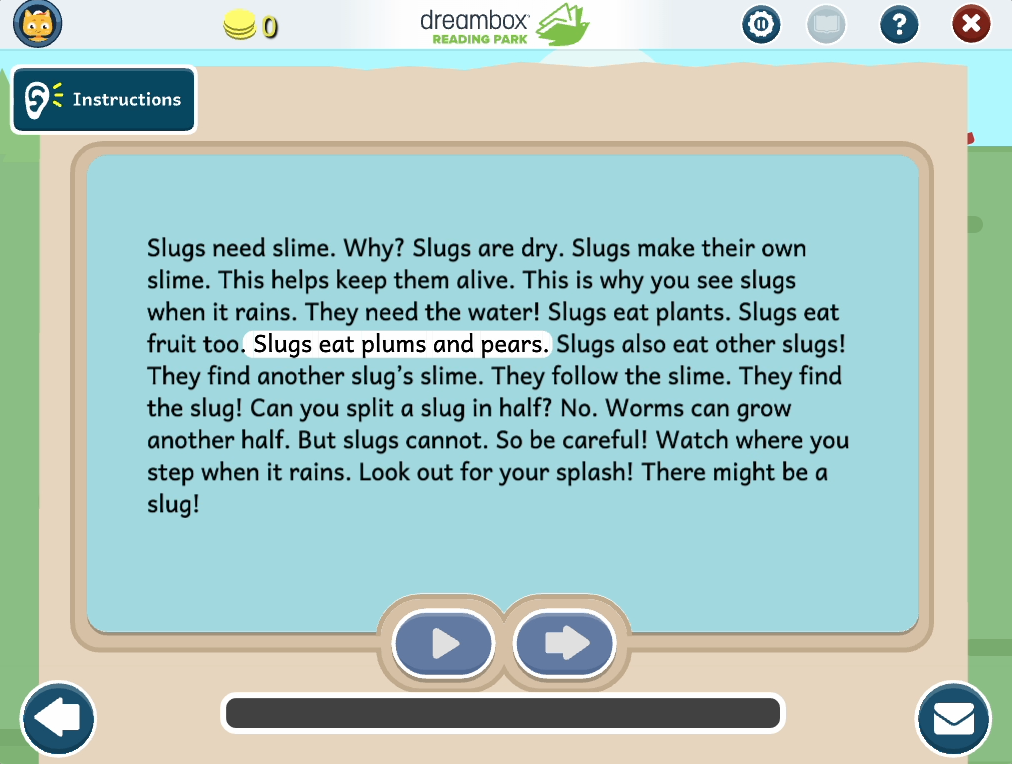
Fluency & Comprehension
Fluency and Comprehension: Reading to Support Inital Blends pl_, sl_, and spl_: “Slugs Need Slime” (Non-Fiction)
In this lesson, students are focusing on fluency and comprehension skills. Students are introduced to the text passage by utilizing a guided reading window that blurs out all of the text, except for what is being read aloud. When the passage is finished, students are then asked comprehension questions based on the text. The student must answer the question by either citing evidence within the text (highlighting the sentence(s) that answer the question), or by answering a multiple choice question.
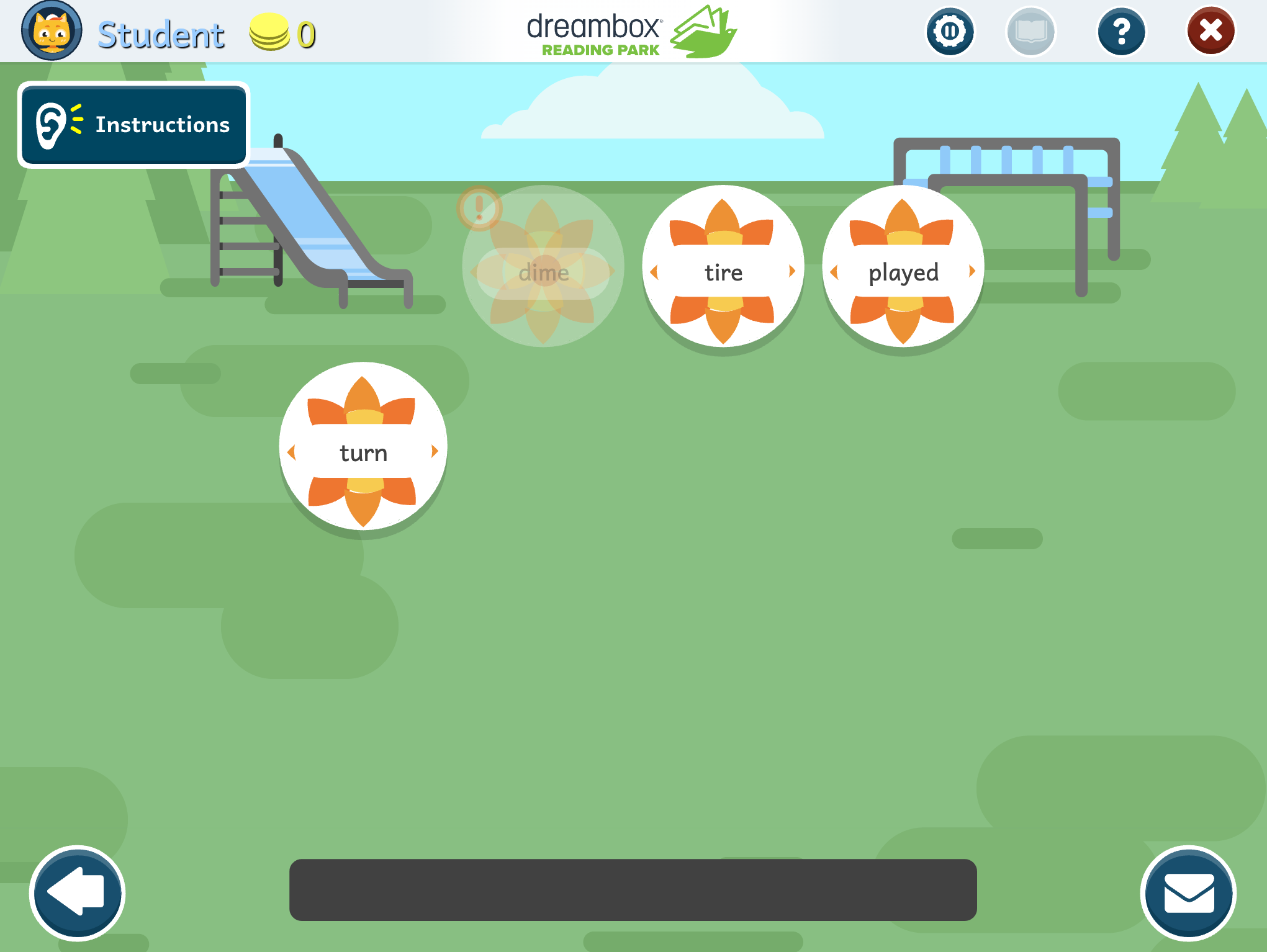
Silent E
Phonics: Silent E: Identifing a_e, i_e, and o_e Words
This activity encourages the practice of eye movement that is required for reading text. Students are presented with words appearing in a sequence from left to right and top to bottom, and asked to identify all of the silent E words before they disappear.

R-Controlled
Phonics: R-Controlled: Ordering Sounds to Build ar Words
In this lesson, students are presented with blank spaces in which to build a word by placing available phonemes in the correct order. Students can see and listen to audio of the target word as well as press the individual phonemes to hear the sounds.
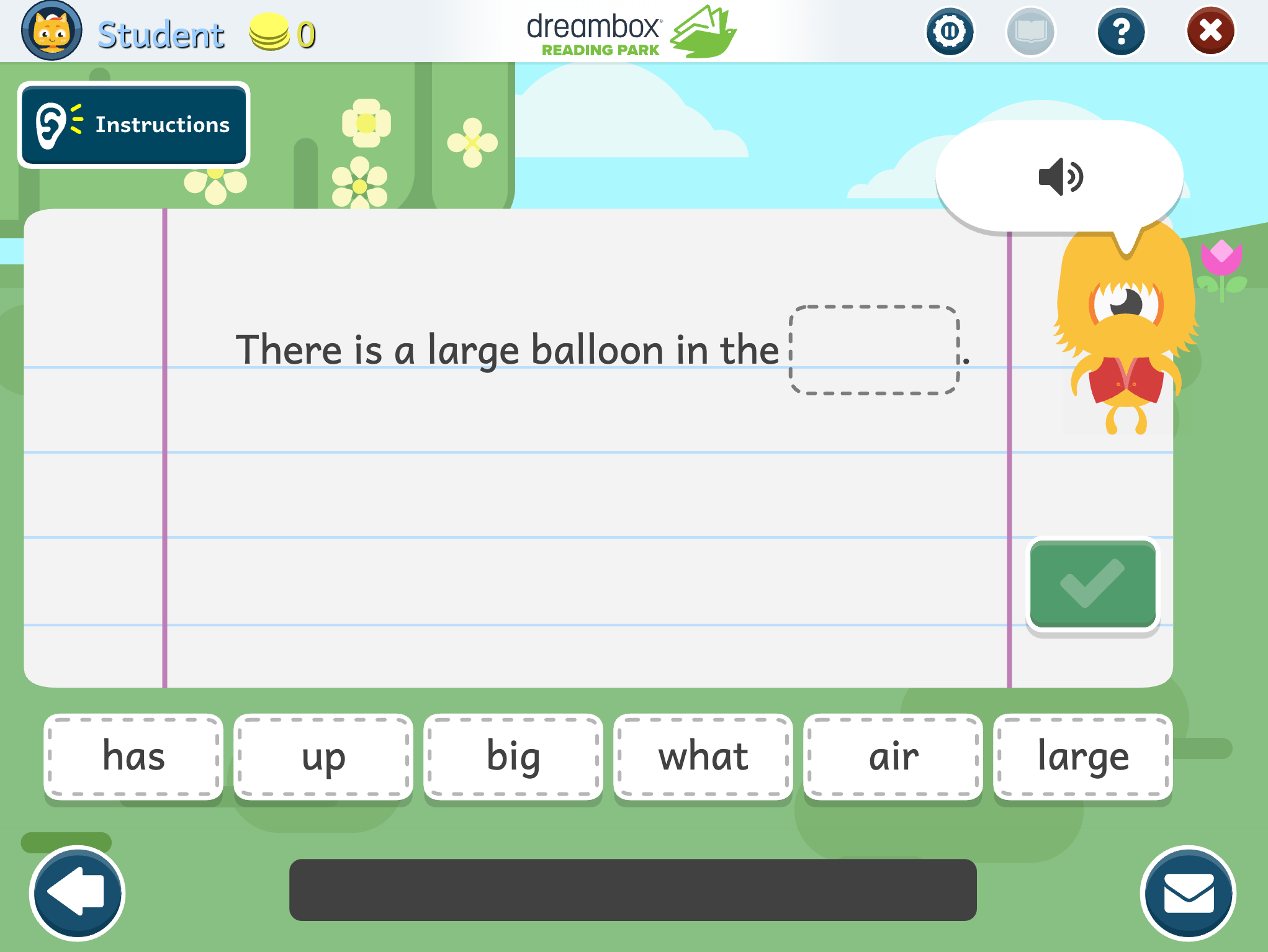
High Frequency Words
High Frequency Words: Completing Sentences With Correct Word (air, before, form, large, try, where, years)
In this lesson, students are shown a sentence with a blank space for a missing word. Audio reads the complete sentence with the missing word included. Students are then asked to fill in the blank with the correct missing word from a set of available options. Students can listen to the complete sentence again, or press any of the options to hear the word choices read aloud.
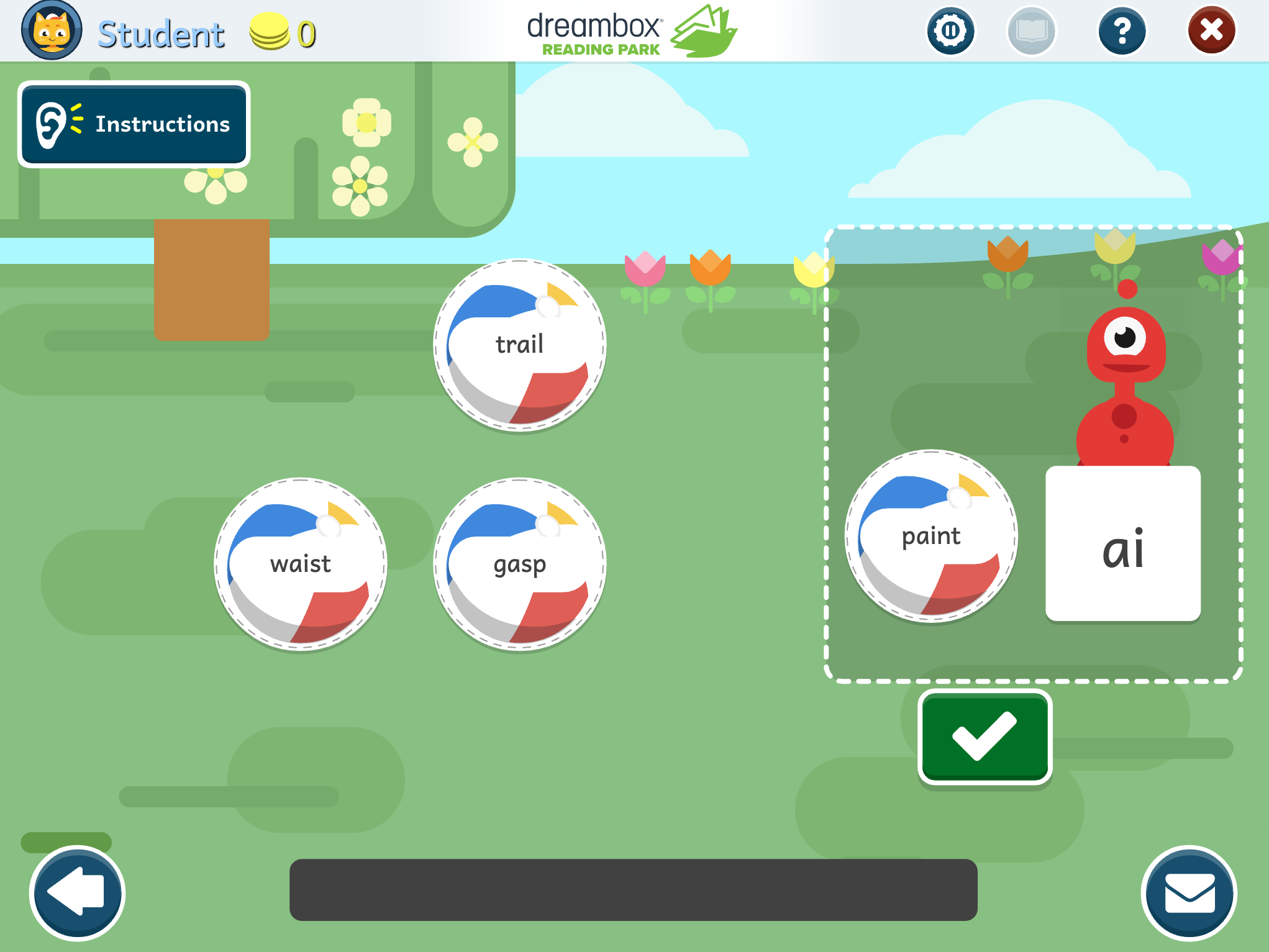
Vowel Teams
Phonics: Vowel Teams: Matching Long A: ai Words (Text to Text)
Students are presented with an assortment of words and asked to choose the one that contains a target vowel team, shown as a grapheme. Students can listen to the vowel team sound or hear each word by pressing on them.

Vowel Teams
Phonics: Vowel Teams: Identifying Long E: ea Words
This activity encourages the eye movement required for reading text. Students are presented with words appearing in a sequence from left to right and top to bottom, and asked to identify all of the words containing Long E, spelled ea, before they disappear.

Silent Letters
Phonics: Silent Letters: Choosing Words That Contain Silent Letters mb /m/, lm /m/, kn /n/, gn /n/, sc /s/, wr /r/, lk /k/
Students are asked to choose a word containing a specific grapheme from an assortment of words. Students can listen to the sound that the grapheme represents or hear any of the words by pressing on them.
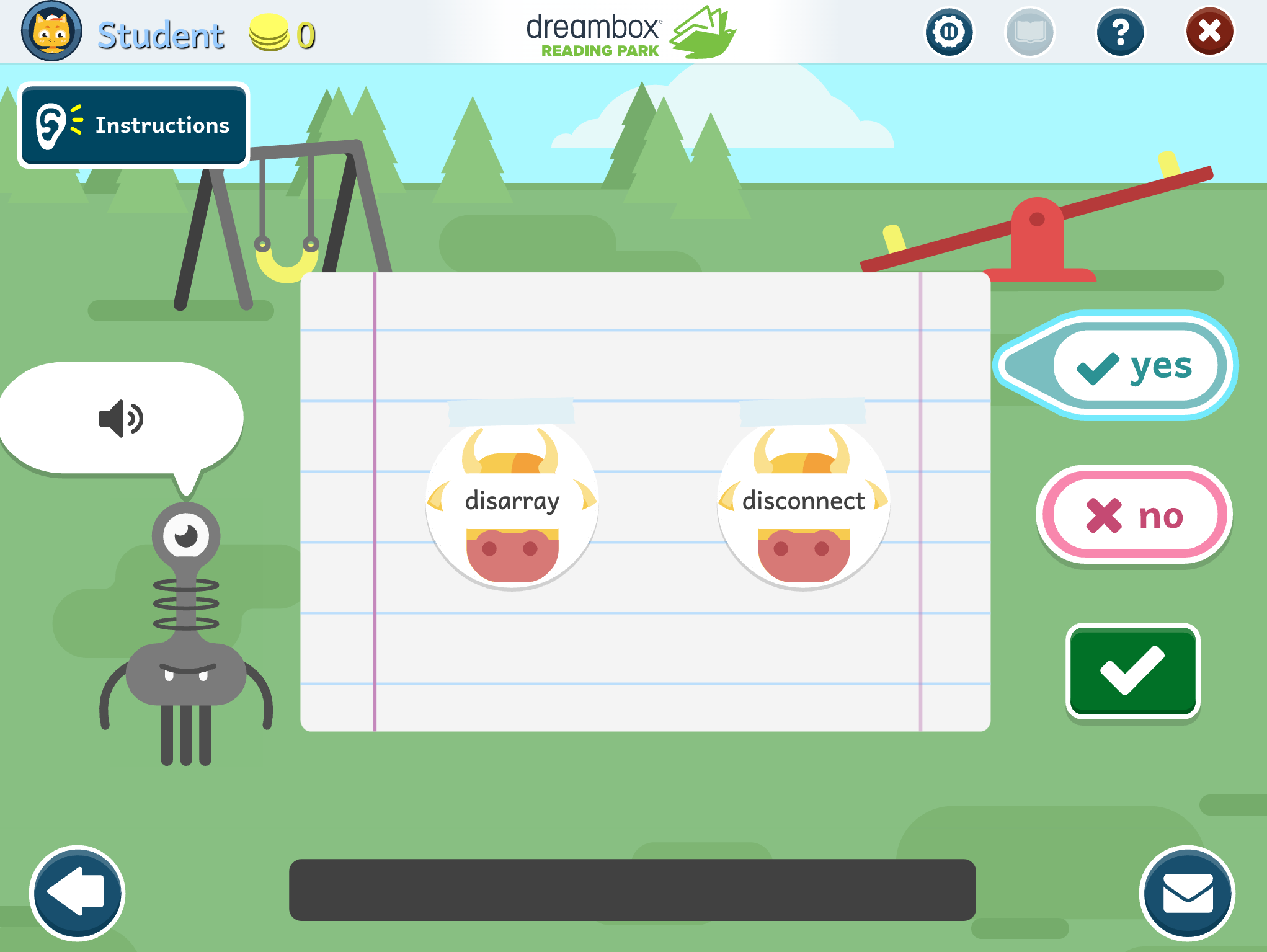
Prefixes
Phonics: Prefixes: Determining Same or Different Prefix dis_
Students are shown two words and asked if they begin with the same prefix. They can listen to the sound of the prefix by pressing the audio icon, and listen to each of the word options by pressing them. Students choose ‘yes’ or ’no’ to answer the question.
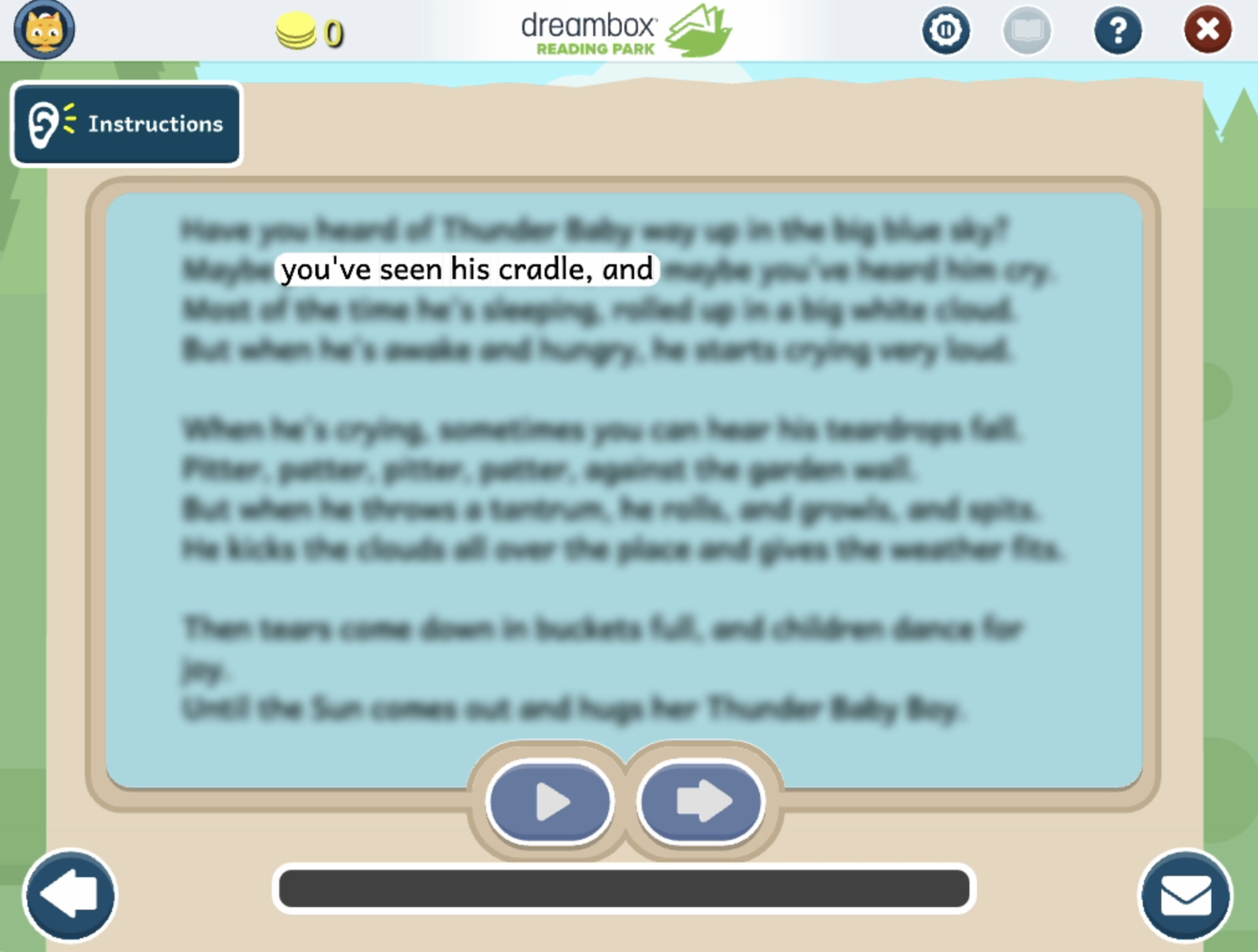
Fluency & Comprehension
Fluency and Comprehension: Reading to Support Concept Progression: “Thunder Baby” (Poetry)
In this lesson, students are focusing on fluency and comprehension skills. Students are introduced to the text passage by utilizing a guided reading window that blurs out all of the text, except for what is being read aloud. When the passage is finished, students are then asked comprehension questions based on the text. The student must answer the question by either citing evidence within the text (highlighting the sentence(s) that answer the question), or by answering a multiple choice question.


